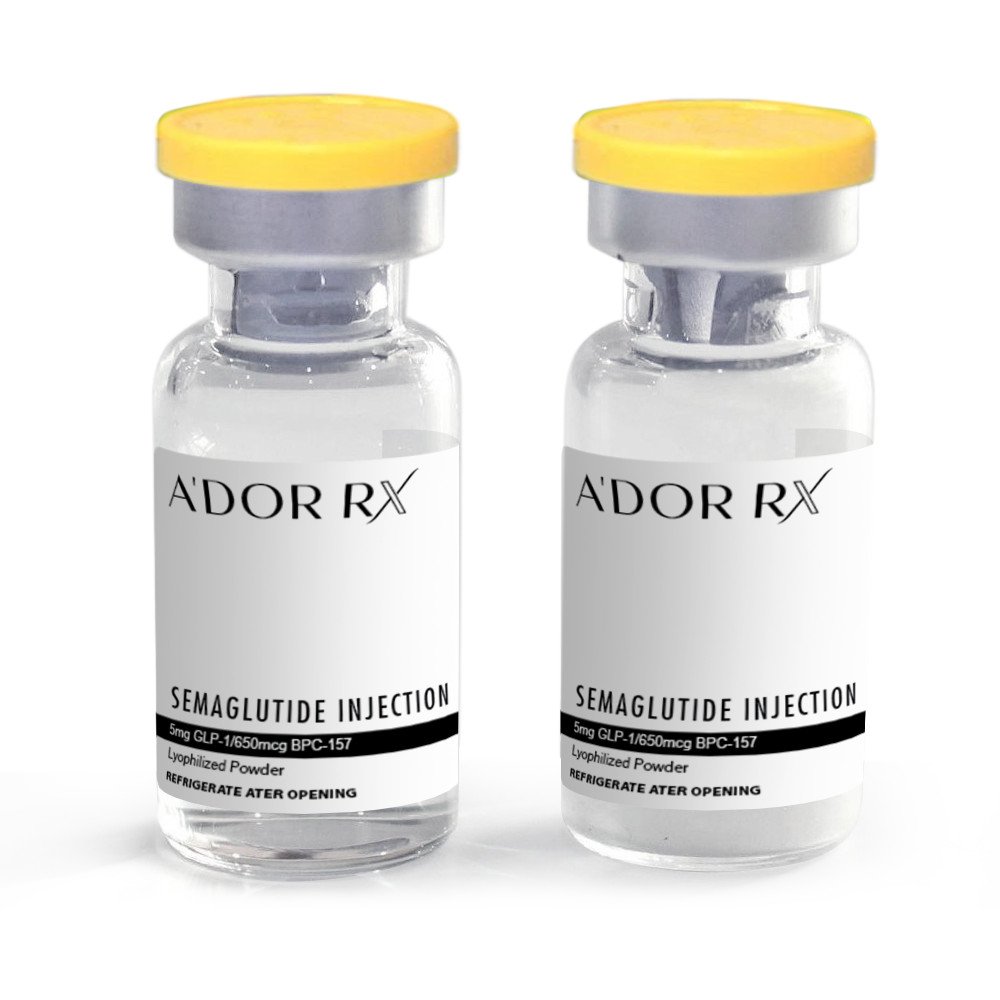SEMAGLUTIDE INJECTION
SEMAGLUTIDE (SEM a GLOO tide) is a type of injectable GLP-1 (Glucagon-Like Peptide-1) agonist used for the treatment of obesity. This semaglutide works by mimicking the effects of a hormone called GLP-1, which is naturally produced by the intestine in response to food intake. GLP-1 is also known as incretin mimetics because it mimics the action of incretin hormones in the body. The U.S. Food and Drug Administration (FDA) approved the first GLP-1 agonist in 2005. Researchers are still learning about their other potential uses and benefits.
GLP-1 works by:
- Slowing down the emptying of the stomach, which helps to reduce appetite and promote feelings of fullness.
- Stimulating the release of insulin from the pancreas, which helps to regulate blood sugar levels.
- Reducing the release of glucose from the liver, which can help to lower blood sugar levels.
GLP-1 is ideal for people with a BMI (body mass index) of 30 or higher, or for those with a BMI of 27 or higher who also have other obesity-related health conditions such as high blood pressure, high cholesterol, or sleep apnea.
The main benefits of GLP-1 are:
- Significant Weight Loss: They can help people to lose a significant amount of weight. In clinical trials, people taking GLP-1 for obesity lost an average of 5-15% of their body weight over a period of 6-12 months, which is about 5 times the amount of weight loss through diet and exercise alone.
- Sustained Weight Loss: This weight loss attained through GLP-1 is maintained over the long term in some research studies.
- Improvement of Comorbidities: GLP-1 can also help to improve other health markers, such as blood pressure, cholesterol levels, and overall cardiovascular health. In addition, this semaglutide may help to reduce the risk of developing other obesity-related health conditions such as fatty liver disease, sleep apnea, and joint problems.
GLP-1 is generally well-tolerated, but it can cause some side effects, such as nausea, vomiting, and diarrhea. However, our semaglutide is compounded with BPC-157 (Body Protection Compound 157) peptide, which is primarily considered a gastroprotective factor (i.e. helpful for the stomach lining) and potential for intestinal and even extra-intestinal healing of soft connective tissue and more.
Initial Dose (5mg GLP-1):
- Weeks 1 through 4: 0.25mg subcutaneously once a week (=1mg)
- Weeks 5 through 8: 0.5mg subcutaneously one a week (=2mg)
- Weeks 9 through 10: 1mg subcutaneously once a week (=2mg)
Maintenance Dose
- Week 11 and onward: 1mg subcutaneously one a week

